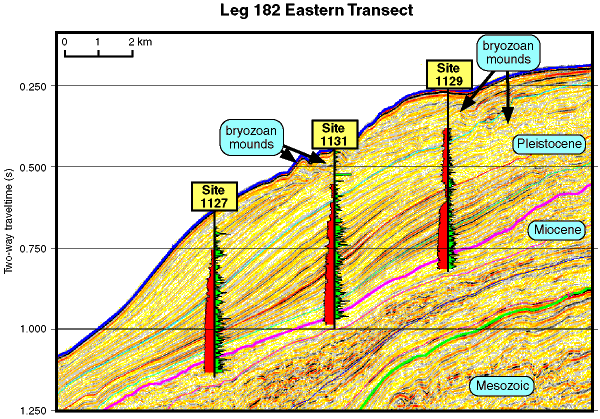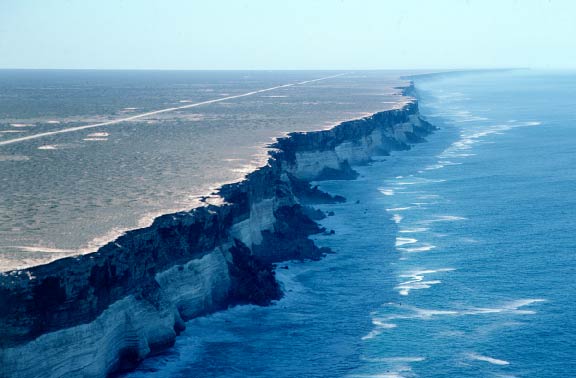
Frontispiece 1. Seismic line AGSO169/05 showing the spectacular prograding clinoforms and bryozoan mounds comprising Sequence 2. This extraordinarily thick succession is almost entirely of Pleistocene age, indicating very high accumulation rates. The sequence boundary at the base of Sequence 2 is an unconformity representing approximately 10 m.y. Sites 1129, 1131, and 1127 are shown with sonic (red) and gamma (green) downhole logs.

Frontispiece 2. An aerial view of the Nullarbor Plain, showing erosional sea cliffs (height = ~100 m) facing the Southern Ocean. The road is the trans-Nullarbor highway. The white sediments at the base are upper Eocene bryozoan microbioclastic wackestones and packstones of the Wilson Bluff Formation. Brown sediments are mainly Oligocene–Miocene bryozoan grainstones and rudstones of the Abrakurrie Formation that are capped by calcrete, developed in and upon grainstones and packstones of the Nullarbor Limestone. The succession represents the middle late Eocene–early middle Miocene evolution of the Great Australian Bight margin, from cool-water deposition of the Wilson Bluff and Abrakurrie Formations to the warm-water carbonates of the Nullarbor Limestone. The entire sequence is equivalent to offshore Sequence 6 (Feary and James, 1995), drilled during Leg 182 (photograph courtesy of Noel P. James).
